Just a step from the centre of Rio de Janeiro, at the heart of the docks undergoing a massive facelift in preparation for the 2016 Olympics, two workers await the verdict of three archaeologists at the bottom of a trench. Municipal workers have once again stumbled on the remains of the Valongo wharf, where the largest number of slaves imported to the Americas disembarked. A place to remember, a place of suffering long buried under the paving stones of this dazzling city.
More than 600,000 slaves passed through in the early 19th century. The slave market stood nearby, much as the "cemetery of new blacks": new because they had just arrived. Since work started in 2010, a huge variety of bracelets, precious stones and personal items has been unearthed, tens of thousands of objects, says Tania Andrade Lima, who heads the dig.
Work on the wharf has also revealed the scale of the slave trade in Brazil. Of the 9.5 million people captured in Africa and brought to the New World between the 16th and 19th century, nearly 4 million landed in Rio, 10 times more than all those sent to the United States.
But for the last century Brazil has tried to forget its past, refusing to accept the legacy of the slave trade. It has sought to project the image of a country of mixed descent, where the colour of a person's skin does not count, a land unfettered by racism where cordial relations reign between citizens of Indian, European and African descent.
Brazil was the last American nation to abolish slavery, on 13 May, 1888. At the time Rio represented the largest urban concentration of slaves since the end of the Roman empire, more than 40% of the population, almost a complete city in irons. Rio city council now plans to turn part of Valongo into an open-air archaeological site. "This heritage can finally be recognised, shown off and used to combat our collective amnesia [...] regarding the black community," Lima suggests. The country is certainly changing. There are few people in Rio who would still describe it as a "racial democracy", a term coined by the sociologist and writer Gilberto Freyre. Black movements tend to refer to "institutionalised racism", a view endorsed, among others, by the Catholic church, which condemns discrimination and the persistence of a slave-based mindset.
According to census results published in 2011 by the Brazilian Institute of Geography and Statistics (IBGE), brancos (whites) account for less than half the population for the first time since the 19th century. Approximately 51% see themselves as preto (black, 8%) or pardo (mixed, 43%), up by more than 5% on 2000. The statistics also show that Brazilians of colour are at a significant disadvantage compared with their white counterparts. Racial inequality is manifest in many respects, starting with the share-out of riches. Two-thirds of the poor are pretos or pardos. With the same qualifications, coloured people earn half as much as whites. A black woman only earns a quarter of the salary paid to a white male. According to a 2007 survey, coloured people only account for 3.5% of executives, 10% of university students, 5% of members of parliament, 3% of the judiciary. So there's room for more change.
President Dilma Rousseff's 36-strong coalition government includes only one black minister, Luiza Helena de Bairros, secretary of state for racial equality. She is a worthy successor to Edison Arantes do Nascimento, aka Pelé, the first coloured man to serve as a minister (of sport) in 1994. All the figures confirm this situation, contradicting the impressions of passing visitors. "Racism in Brazil is well hidden, subtle and unspoken, underestimated by the media," says Joaquim Barbosa, the first black judge to sit on the bench of the supreme court in Brasilia. "It is nevertheless extremely violent." Appointed by President Luiz Inácio Lula da Silva (left) in 2003 and a well-known public figure, he recalls two occasions when white men handed him their car keys as he entered a fashionable restaurant in Rio. Being black they assumed he was a valet. "But," he adds, "things are slowly changing and awareness is growing."
In a sensational decision this April the 10 supreme court judges unanimously ruled in favour of positive discrimination in higher education, declaring that the racial quotas in Brazilian universities were constitutional and redressed the "social debt of slavery". Dozens of expert witnesses were heard and the ruling was televised live.
In August the senate passed a bill requiring federal universities to reserve half their places for students from state schools. Rousseff has signed the whole text into law; universities have till 2015 to comply. In practice the law mixes social and racial criteria, taking into account local particularities. It sets aside a quarter of all places in federal universities for students from families with an income less than or equal to one and a half times the minimum wage ($460). The other quarter will be allocated to students according to their self-declared skin colour.
According to the daily O Globo the law will more than double the number of affirmative-action places in Rio's four federal universities. They currently set aside 5,400 places for social quotas, but under the new arrangements their number will rise to 12,350. Opponents of the quota system have condemned the "racialisation" of Brazil, rooted in an increasingly ethnic approach to social affairs. Above all the ensuing debate seems to have put an end to the myth of racial democracy, in which skin colour does not count.
A major change is apparently underway in what the sociologist Alberto Guerreiro Ramos called "the most racist country in the world", during the military dictatorship in the 1980s, a view endorsed by most of the experts Le Monde talked to. "The quotas are the only alternative to the mechanisms of concealment and social exclusion set up since the end of slavery," says Spiritos Santos, the author of a lively blog on racial issues.
"This new phase is a revolution for Brazil," says David Raimundo dos Santos, a Franciscan friar who heads Educafro, an NGO that campaigns to gain access to education for coloured people. He believes that blacks, once slave to a master, are now slaves to a system. "Brazil is waking up and can now claim to have found a method for integration," he adds.
Since independence in 1822, the Brazilian elite has sought to deny the nation's African roots. "In an effort to glorify the past, while making no concessions to the Portuguese, the elite started by promoting the Indians, the original masters of the land and no threat to the slave-makers," says the historian Richard Marin. Blacks were sidelined. Even the abolitionist writer Ruy Barbosa de Oliveirato, then finance minister, authorised much of the government records of slavery to be destroyed in 1890.
When slavery was finally abolished the former captives were left to fend for themselves. Unlike Abraham Lincoln, who established 4,000 schools for former slaves, Brazil did not open a single one. "With no land nor education, cut off from any social organisation, the enfranchised blacks were condemned to misery," according to historian Alain Rouquié. "The long-awaited abolition ultimately entrenched inequality."
Prior to the financial crisis of 1929 the boom in coffee production attracted 4 million immigrants from Europe with little concern for the country's colonial past. On the grounds that this young and prosperous nation could not flourish with a largely black population, European immigration was encouraged in order to "whiten" Brazil, to limpar o sangue (cleanse the blood).
Efforts to reassert the country's racial legacy started in the 1920s with Brazilian Modernism, which cast off Europe's academic strictures, and the novels of Mario de Andrade, which focused on the switch from a white to a black culture. In the 1930s the work of sociologist Gilberto Freyre – in particular Casa Grande e Senzala (Masters and Slaves) – highlighted racial mixing as one of Brazil's defining features. He made no distinction between the three main ethnic groups – Africans, Indians and Portuguese.
This concept, which contrasted with the north American segregationist model, proved very popular in Brazil, boosting the legitimacy of the authoritarian Estado Novo regime, in power during the second world war. Half-white, half-black Nossa Senhora da Conceiçao Aparecida became the country's patron saint.
But there was a big gap between the supposed racial democracy and the actual condition of many Afro-Brazilians, the victims of racism. Concealed by the absence of legal segregation and the warmth of social intercourse, this "cordial racism" was denied.
The debate on quotas started in the 1990s under President Fernando Henrique Cardoso. He set up working groups to discuss public action to promote the black community and made it compulsory for official documents to indicate skin colour. In 2002 Bahia State University introduced racial quotas, gradually followed by about 60 other establishments.
Under Lula, the explicit goal of racial quotas was to compensate for the racial discrimination endured by blacks. After 10 years of debate and experiment the ruling by the supreme court endorses this approach.
The streets of the Valongo neighbourhood have just been paved over and re-opened to traffic. This evening the first episode of a telenovela (soap), Lado a Lado (side by side) will be broadcast. It is the story of a black community after the abolition of slavery. "It is an exciting and as yet little known period," said the lead actor, Lazaro Ramos. Could he be joking?
This article appeared in Guardian Weekly, which incorporates material from Le Monde
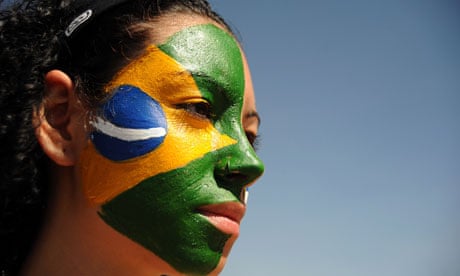


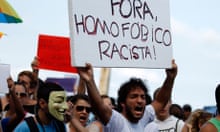
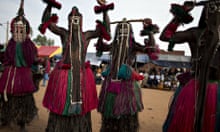

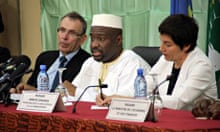

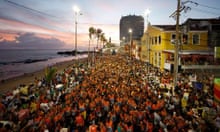


Comments (…)
Sign in or create your Guardian account to join the discussion